Do you have a question about the Craftsman 580.752541 and is the answer not in the manual?
Two year limited warranty against defects in material or workmanship for the pressure washer.
Key safety information and meanings of symbols used in the manual for safe operation.
Explanation of safety alert symbols, signal words (DANGER, WARNING, CAUTION), and hazard symbols.
Overview of the pressure washer and its controls for familiarization before operation.
Identification and description of the main components and features of the pressure washer.
Instructions for unpacking the pressure washer and checking carton contents.
List of items included in the carton, including the main unit and accessories.
Step-by-step guide for assembling the Craftsman pressure washer before operation.
Explanation of the two detergent siphoning tubes and their operation.
Instructions for checking and adding engine oil to the pressure washer.
Requirements and safety precautions for adding gasoline to the fuel tank.
Guidelines for using fuel stabilizers, protecting the fuel system, and handling alcohol-blended fuels.
Considerations for operating the pressure washer at high altitudes, including fuel adjustments.
Information about the optional Fresh Start fuel cap and its function with fuel preserver.
Importance and procedure for lubricating o-rings on connections for proper sealing and longevity.
Steps for connecting the high pressure hose to the spray gun and the pump outlet.
Instructions for checking the water inlet screen and connecting the garden hose.
A checklist of essential steps to perform before starting the pressure washer engine.
Guidelines for positioning the pressure washer outdoors with adequate clearance for exhaust and safety.
Step-by-step instructions for starting the engine-powered pressure washer for the first time.
Instructions for attaching the nozzle extension to the spray gun.
Setting the throttle lever to 'Fast' and choke lever to 'Choke' for starting a cold engine.
Procedure for pulling the recoil starter to start the engine, including kickback warnings.
Step-by-step instructions for safely shutting down the pressure washer engine and releasing pressure.
Instructions on how to use the accessory tray to store the spray gun, nozzle extension, and hose.
Tips for effective cleaning distance and avoiding surface damage with the selector nozzle.
Procedure for using the Project Pro PerfectMix siphon to apply detergent.
Procedure for using the standard clear siphon tube to apply diluted detergent.
Steps for rinsing surfaces after detergent application using high pressure spray.
Procedure for flushing the detergent siphoning system with clean water after use.
Explanation of the automatic cool down system that protects the pump from overheating.
Details about the single cylinder, overhead valve, air-cooled, low emissions engine.
Explanation of gross vs. net power ratings and factors affecting engine performance.
Key performance specifications for the pressure washer, including pressure and flow rate.
Owner's obligations for regular maintenance to ensure performance and warranty coverage.
Schedule of required maintenance tasks based on operating hours or calendar intervals.
Advice on regular maintenance, service intervals, and warranty adherence.
Procedure for inspecting and cleaning detergent siphoning tubes and filters.
How to check and free the detergent siphoning check ball if it becomes stuck.
Inspection steps for the spray gun and nozzle extension for proper function and safety.
Procedure for cleaning clogged or restricted selector nozzles to correct pulsing sensations.
Recommended oil types and viscosity based on outdoor temperature for engine lubrication.
Procedure for checking the engine oil level before each use or at regular intervals.
Instructions for adding engine oil to the correct level in the pressure washer's crankcase.
Steps for draining and refilling the engine oil, including precautions for used oil.
Instructions for cleaning or replacing the engine's air cleaner cartridge for proper performance.
Guidance on changing, inspecting, and gapping the spark plug for easier engine starting.
Procedure for inspecting the muffler and spark arrester for damage or blockage.
Recommendation for professional cleaning of the engine's cooling system.
Information regarding the non-adjustable carburetor and factory-set speed.
Steps to protect the pressure washer from freezing temperatures and permanent damage.
Using PumpSaver to protect the pump from mineral deposits and freezing.
Preparing the engine and pump for storage longer than 30 days to prevent fuel system issues.
Using fuel stabilizers to prevent gum formation and maintain fuel freshness during storage.
Troubleshooting steps for issues like low pressure, chattering, or loss of pressure.
Troubleshooting steps when the detergent fails to mix correctly with the spray.
Diagnosing and correcting engine 'bogging' when load is applied.
Troubleshooting for engines that won't start, run rough, or shut down during operation.
Exploded view diagram and list of parts for the main unit of the pressure washer.
Exploded view diagram and list of parts for the pressure washer's pump assembly.
Explanation of owner's rights and responsibilities regarding the emissions control system warranty.
Details on the two-year warranty for emissions-related parts on small off-road engines.
List of specific parts covered under the emissions control system warranty.
Duration of the emissions control warranty, which is two years from the original purchase date.
Details on how the warranty applies to parts requiring scheduled maintenance or replacement.
Coverage for engine components failing due to warranted emissions parts failure.
Conditions that exclude warranty coverage, such as using non-original parts or abuse.
Information on engine emissions compliance hours and air index labels.
Contact information for troubleshooting, product manuals, and expert advice for home appliances.
Contact information for in-home repair of major appliances and lawn equipment.
Contact information for repair of carry-in items like vacuums and electronics.
Phone numbers for purchasing a protection agreement on products serviced by Sears.
Two year limited warranty against defects in material or workmanship for the pressure washer.
Key safety information and meanings of symbols used in the manual for safe operation.
Explanation of safety alert symbols, signal words (DANGER, WARNING, CAUTION), and hazard symbols.
Overview of the pressure washer and its controls for familiarization before operation.
Identification and description of the main components and features of the pressure washer.
Instructions for unpacking the pressure washer and checking carton contents.
List of items included in the carton, including the main unit and accessories.
Step-by-step guide for assembling the Craftsman pressure washer before operation.
Explanation of the two detergent siphoning tubes and their operation.
Instructions for checking and adding engine oil to the pressure washer.
Requirements and safety precautions for adding gasoline to the fuel tank.
Guidelines for using fuel stabilizers, protecting the fuel system, and handling alcohol-blended fuels.
Considerations for operating the pressure washer at high altitudes, including fuel adjustments.
Information about the optional Fresh Start fuel cap and its function with fuel preserver.
Importance and procedure for lubricating o-rings on connections for proper sealing and longevity.
Steps for connecting the high pressure hose to the spray gun and the pump outlet.
Instructions for checking the water inlet screen and connecting the garden hose.
A checklist of essential steps to perform before starting the pressure washer engine.
Guidelines for positioning the pressure washer outdoors with adequate clearance for exhaust and safety.
Step-by-step instructions for starting the engine-powered pressure washer for the first time.
Instructions for attaching the nozzle extension to the spray gun.
Setting the throttle lever to 'Fast' and choke lever to 'Choke' for starting a cold engine.
Procedure for pulling the recoil starter to start the engine, including kickback warnings.
Step-by-step instructions for safely shutting down the pressure washer engine and releasing pressure.
Instructions on how to use the accessory tray to store the spray gun, nozzle extension, and hose.
Tips for effective cleaning distance and avoiding surface damage with the selector nozzle.
Procedure for using the Project Pro PerfectMix siphon to apply detergent.
Procedure for using the standard clear siphon tube to apply diluted detergent.
Steps for rinsing surfaces after detergent application using high pressure spray.
Procedure for flushing the detergent siphoning system with clean water after use.
Explanation of the automatic cool down system that protects the pump from overheating.
Details about the single cylinder, overhead valve, air-cooled, low emissions engine.
Explanation of gross vs. net power ratings and factors affecting engine performance.
Key performance specifications for the pressure washer, including pressure and flow rate.
Owner's obligations for regular maintenance to ensure performance and warranty coverage.
Schedule of required maintenance tasks based on operating hours or calendar intervals.
Advice on regular maintenance, service intervals, and warranty adherence.
Procedure for inspecting and cleaning detergent siphoning tubes and filters.
How to check and free the detergent siphoning check ball if it becomes stuck.
Inspection steps for the spray gun and nozzle extension for proper function and safety.
Procedure for cleaning clogged or restricted selector nozzles to correct pulsing sensations.
Recommended oil types and viscosity based on outdoor temperature for engine lubrication.
Procedure for checking the engine oil level before each use or at regular intervals.
Instructions for adding engine oil to the correct level in the pressure washer's crankcase.
Steps for draining and refilling the engine oil, including precautions for used oil.
Instructions for cleaning or replacing the engine's air cleaner cartridge for proper performance.
Guidance on changing, inspecting, and gapping the spark plug for easier engine starting.
Procedure for inspecting the muffler and spark arrester for damage or blockage.
Recommendation for professional cleaning of the engine's cooling system.
Information regarding the non-adjustable carburetor and factory-set speed.
Steps to protect the pressure washer from freezing temperatures and permanent damage.
Using PumpSaver to protect the pump from mineral deposits and freezing.
Preparing the engine and pump for storage longer than 30 days to prevent fuel system issues.
Using fuel stabilizers to prevent gum formation and maintain fuel freshness during storage.
Troubleshooting steps for issues like low pressure, chattering, or loss of pressure.
Troubleshooting steps when the detergent fails to mix correctly with the spray.
Diagnosing and correcting engine 'bogging' when load is applied.
Troubleshooting for engines that won't start, run rough, or shut down during operation.
Exploded view diagram and list of parts for the main unit of the pressure washer.
Exploded view diagram and list of parts for the pressure washer's pump assembly.
Explanation of owner's rights and responsibilities regarding the emissions control system warranty.
Details on the two-year warranty for emissions-related parts on small off-road engines.
List of specific parts covered under the emissions control system warranty.
Duration of the emissions control warranty, which is two years from the original purchase date.
Details on how the warranty applies to parts requiring scheduled maintenance or replacement.
Coverage for engine components failing due to warranted emissions parts failure.
Conditions that exclude warranty coverage, such as using non-original parts or abuse.
Information on engine emissions compliance hours and air index labels.
Contact information for troubleshooting, product manuals, and expert advice for home appliances.
Contact information for in-home repair of major appliances and lawn equipment.
Contact information for repair of carry-in items like vacuums and electronics.
Phone numbers for purchasing a protection agreement on products serviced by Sears.
| Power Source | Gasoline |
|---|---|
| Pump Type | Axial Cam |
| Soap Tank Capacity | 1 gallon |
| Hose Length | 25 ft |
| Engine Type | 4-Cycle OHV |
| Wheels | Yes |
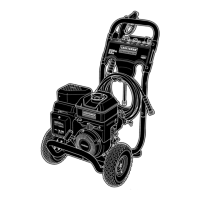
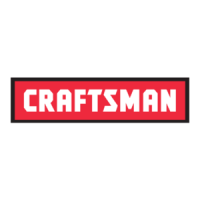
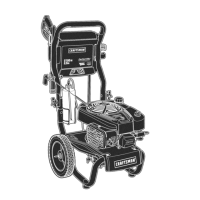
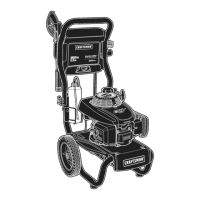
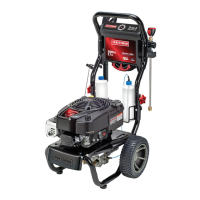
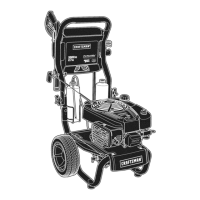
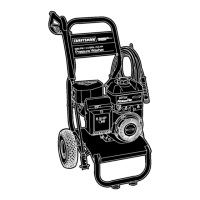
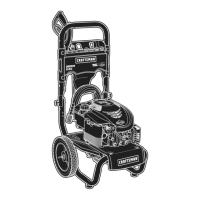
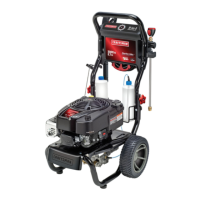
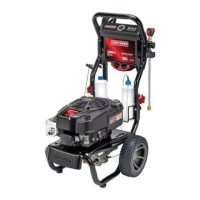

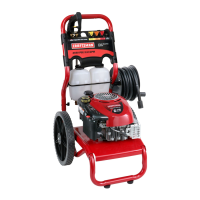
